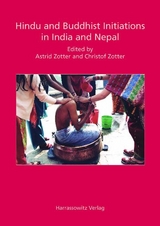孙伯君 (著) 《西夏新译佛经陀罗尼的对音研究》 中国社会科学出版社 2010-05-01
Sūn Bójūn. Xīxià xīnyì Fójīng Duóluóní de duìyīn yánjiū [Researches on the newly transcribed Dharanis in Xixia]. Beijing: China Social Sciences Press, 196 pp. 2010. ISBN 9787500488903.
Brief Contents
第一章 几种西夏新译汉文佛经陀罗尼材料
第一节 宝源译《胜相顶尊总持功能依经录》、《圣观自在大悲心总持功能依经录》
一 考述
二 “尊胜陀罗尼”的梵汉对音
三 “大悲心陀罗尼”的梵、藏、汉对音
第二节 八思巴字注音本《密咒圆因往生集》
一 考述
二 《密咒圆因往生集》的梵、八思巴、汉对音
第三节 元代藏经中的西夏译本辑考
一 西夏陀罗尼对音的用字特点
二 释智译《圣妙吉祥真实名经》为西夏译本
三 《圣妙吉祥真实名经》中陀罗尼的梵汉对音
四 真智译《佛说大白伞盖总持陀罗尼经》为西夏译本
五 《佛说大白伞盖总持陀罗尼经》中陀罗尼的梵汉对音


 Astrid Zotter and Christof Zotter (eds). Hindu and Buddhist initiations in India and Nepal. Ethno-Indology, v.10. Wiesbaden: Harrassowitz, 2010. 380 p. ISBN 9783447063876. [
Astrid Zotter and Christof Zotter (eds). Hindu and Buddhist initiations in India and Nepal. Ethno-Indology, v.10. Wiesbaden: Harrassowitz, 2010. 380 p. ISBN 9783447063876. [